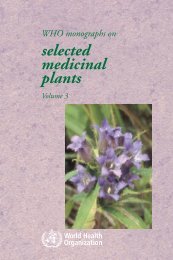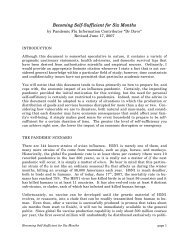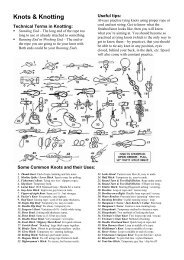Create successful ePaper yourself
Turn your PDF publications into a flip-book with our unique Google optimized e-Paper software.
ABOUT MUSHROOMS<br />
Those starting from scratch might do well to restrict themselves to<br />
"The Foolproof Four" for a time. As knowledge is gained and confidence<br />
increases, go on to those in which spore color is a necessary<br />
identifying character. Since all the characters other than spore<br />
color can be determined readily in the field, compare your specimens<br />
with the pictures and descriptions in the book as you find<br />
them, leaving only spore color to be determined at home. The<br />
pictures do not show comparative sizes, but the range in size of<br />
each kind is given in the text.<br />
When you set out on a mushroom-hunting expedition you<br />
need no equipment other than a clean cloth, a basket or a paper<br />
bag, and a sharp knife. But don't let your rapture at discovering<br />
a fine clump of gilled fungi, or puffballs, or shaggymanes,<br />
allow you to pull them up carelessly and throw them helterskelter<br />
into the basket or paper bag. You need to be sure not<br />
only of the kinds you pick but of their age and condition. Avoid<br />
those that are old, limp, and flabby, for in all probability they<br />
have already been partly decomposed by bacteria, and some of<br />
these bacteria or their decomposition products may be harmful.<br />
When you have selected a ripe, plump specimen, cut off the<br />
stem neatly just above the ground. Then wipe the cap with your<br />
cloth and remove from the under surface any debris that may be<br />
present. Ordinarily the gills are clean, but small beetles or an occasional<br />
slug may have got in among them. These interlopers<br />
should be removed on the spot, even though you are intending<br />
to make a spore print when you get home.<br />
Now that you are certain that the outside of the mushroom is<br />
clean, break open the cap, split the stem lengthwise, and examine<br />
each one for the presence of fly or beetle larvae. If only the stem<br />
is infested, it can be broken off and discarded, but if you find<br />
maggots in the cap by all means throw it away. When the mushroom<br />
has thus passed inspection, put it in your bag or basket. It is<br />
well to segregate the tender and tough kinds, perhaps by making a<br />
paper partition in your basket or by taking along an extra paper<br />
bag, for you have to sort them anyway before cooking them.<br />
J 5
















